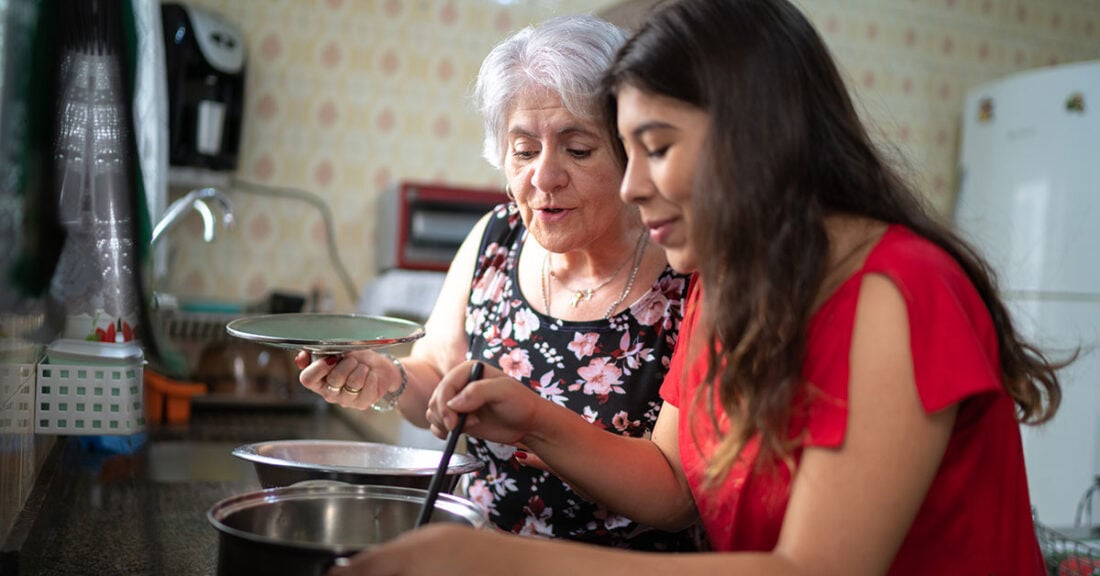What Is Kinship Care?

Kinship care is when relatives or close friends step up to raise children when their parents can’t care for them for the time being. It is common for kin to help care for a child without any child welfare system involvement. In fact, more than 7.5 million children live with a relative who is the head of their household, and over 2.5 million children are in kinship care without a parent present in the United States. If you were raised by a grandparent, an aunt or a close friend, you were raised under kinship care.
Types of Kinship Fostering
What are the three types of kinship-based support? There is no uniform definition of kinship care, but there are three sometimes overlapping categories:
Private or Informal Kinship Care
These are arrangements made by families, with or without legal recognition of the caregiver’s status. Clear practice guidelines and the collection of accurate, consistent child-level information are needed to know the number of children living in informal kinship arrangements (facilitated by child welfare agencies).
Diversion Kinship Care
In some cases, child welfare agencies work with parents to facilitate moving a child to a relative’s care, sometimes by opening a case and sometimes by doing an assessment or child protection investigation (arrangements vary widely by jurisdiction). This category, called kinship diversion (also known as foster care diversion, voluntary placement or safety planning, among other terms), includes all children who have come to the attention of child welfare agencies and live with a relative or close friend of the family. Most of these children — an estimated 100,000 to 300,000 entering diversion arrangements each year — are not in formal foster care.
Licensed or Unlicensed Kinship Care
In 2023, nearly 110,000 children and teens were in kinship foster care, defined as living with relatives but remaining in the legal custody of the state. This group represents 31% of all children in foster care, down from 34 in 2022.
However, far more children are being raised by relatives outside of the child welfare system versus within it. For example, estimates show that for every one child in kinship foster care, 18 kids are raised by relatives outside of the system.
The History of Kinship Care
Throughout history, families have cared for relative children during times of illness, poverty, incarceration, death, violence or other family crises. Many cultures continue this practice to this day, often outside of the social service or court systems.
In the past, many professionals have wondered whether child welfare systems might do a better job raising children than kin families with financial or other challenges. Today, most child welfare professionals agree that placing children with appropriate kin is the best living situation for children whose parents aren’t able to care for them safely at home.
To learn more about kinship diversion practice, read New Insights on State Kinship Diversion Policies.
Some Facts About Kinship Care
- About 4% of all U.S. kids live in kinship care. At the state level during 2023–2025, this figure ranged from 1% to 9%, with the highest share in Mississippi.
- Past research has estimated that about one in 11 children lives in kinship care at some point before turning 18.
- Children raised by kin are more likely to be poor than kids in general, and voluntary kinship caregivers in diversion arrangements are more likely to report financial struggles and live in poverty than any caregivers in the foster care system (relatives or not).
- The share of grandparents age 60 and older who are raising grandkids has increased in the last decade. The majority of grandparent caregivers are women (63%) and in the workforce (55%).
- Worldwide, an estimated one in 10 kids lives in kinship care.
What are some kinship care benefits?
Compared to children in the general foster care population, kids in kinship care tend to:
- be more likely to stay with their siblings and maintain lifelong connections to family;
- have more stability — i.e. they move less frequently;
- have better physical health and experience fewer behavioral problems;
- have better academic outcomes; and
- have continued positive outcomes as adults, including better educational achievement and employment prospects, as well as reduced likelihood of receiving public assistance or experiencing homelessness or incarceration.
Kinship care also helps to minimize trauma for children and preserve their cultural identity and connections to their communities.
Many research gaps still exist, though, regarding the benefits of kinship care and the experiences of children, youth and caregivers in different kin arrangements. In particular, more research is needed on how experiences and outcomes vary by: race and ethnicity (especially for groups in kinship care); types of kinship arrangements and caregivers; and other demographic factors, such as location, income level, LGBTQ+ status, disability status, age and legal status. Whole-family outcomes need further exploration, as well.
Continued Disparities in Service Provision Between Types of Kinship Care
Many kids and their kinship caregivers need assistance. Caregivers often do not realize they are eligible for financial help or other services and/or they may be hesitant to seek help.
For years, significant disparities have persisted in the services available for caregivers and children by type of kinship care placement. For instance:
- 44 states provide financial assistance to licensed kinship caregivers, 23 provide it to unlicensed kinship caregivers and only 10 provide it to kinship caregivers in diversion arrangements, according to the Foundation’s 2024 report, New Insights on State Kinship Diversion Policies.
- This pattern of disparities—with far fewer resources available for those in diversion arrangements—is true for nearly all types of services, including child care, respite care, mental health, assistance with Medicaid, legal services, support groups, caregiver training, transportation, independent living and education services for youth and more.
- A federal report by the Administration for Children and Families (ACF) also found that formal kinship caregivers were more than twice as likely to access Temporary Assistance for Needy Families (TANF) compared to those in diversion arrangements: 37% vs. 17%, respectively.
However, kinship caregivers of all types face barriers in accessing resources and services compared to nonrelative foster caregivers:
- The same ACF report found that less than a third (30%) of all kinship caregivers received foster care training and even smaller shares received other support services, such as peer support groups (9%) and respite care (4%), while much higher shares of nonrelative foster caregivers received these services.
- It also found that 22% of kinship caregivers received help obtaining Medicaid for children in their care, compared to 54% of nonrelative foster caregivers.
- In addition, kids in kinship care with developmental, cognitive and academic difficulties are less likely to receive needed early intervention or special education services than their peers in nonrelative foster care, and unmet needs are especially pronounced in voluntary kinship families, according to a 2020 ACF report.
Interested to know what young people and families think about kinship care? Check out Kin, First and Foremost a 2024 report that outlines policy and practice improvements based the views of youth, families and professionals in the child welfare system.
Kinship Care Resources for Agencies, Caseworkers and Policymakers
- Family Ties: A five-part report series, commissioned by the Foundation, on kinship care policy.
- Equipping Kinship Caregivers for Success: A Q&A with Joseph Crumbley
- Translating Kin-First Commitments Into Practice: Management Strategies for Child Welfare Leaders
- Engaging Kinship Caregivers: Managing Risk Factors in Kinship Care: A five-part video training series.
- Supporting Kinship Caregivers Through the Family First Prevention Services Act
- Does Your Child Welfare Agency Divert Children to Kin?
- Kin, First and Foremost: Challenges, Opportunities, and the Path Forward for Kinship Care
- Grandfamilies.org: A national legal resource in support of grandfamilies within and outside the child welfare system.
- Grandfamilies & Kinship Support Network: A national technical assistance center for those serving kinship or grandfamilies.
Resources for Kinship Caregivers and Their Communities
- New Insights on State Kinship Diversion Policies
- Coping with the Unique Challenges of Kinship Care: A four-part video training series.
- Virtual Resource Kit on Relative Caregiving: A resource by the Wisconsin Family Connections Center and Coalition for Children, Youth & Families, with applicability to caregivers nationally.
Access more information about Kinship Care from Casey Family Programs and the federal government’s Child Welfare Information Gateway.
Sign up for Casey’s newsletter to receive additional updates and resources






